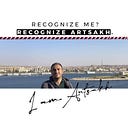Hemshinlis and the Homshetsi dialect
Homshetsi is a dialect spoken by the East Hemshinli people, also known as Hopa Hemshinli, who live in a small number of villages in the Artvin and Central Asian provinces of Turkey. The Westerners, or Rize Hamsheni, are a related and geographically separate group living in the province of Rize who spoke Homshetsi until the 19th century. They now speak only Turkish, with many borrowed words from Homshetsi. The third group, the northern Homshentsiks, who live in Russia, Georgia (Abkhazia), and Armenia, also speak Homshetsi.
Homshetsi has linguistic features that suggest it belongs to the West Armenian dialect group; however, the two are often not mutually intelligible. Homshetsi is closely related to the Armenian dialects once found in northeastern Türkiye, especially Khodorchur and, to a lesser extent, Trabzon. Due to its prolonged isolation, Homshetsi contains many ancient architectures that distinguish it from all other Armenian dialects. The language preserves forms found only in Classical and Medieval Armenian while preserving foreign grammatical and lexical components (especially Arabic and Turkish) that have been removed from Modern Armenian in the 20th century.
It has some differences from the Armenian spoken in Armenia. It was not a written language until 1995, when linguist Bert Vaux devised a spelling system based on the Turkish alphabet. The Armenian alphabet was used by Christian immigrants from Hamshen (Northern Hamshenis), who called the language Homshetsma in Russia and Abkhazia.
UNESCO has classified Homshetsi as a "certainly threatened" language.
There are three subgroups of Hemshinlis:
1- The Western Hemshinli, living in the Rize province of Turkey and scattered elsewhere in Turkey, speak Turkish and are Sunni Muslims. This group calls themselves Hemshinli.
2- The East Hemshinlis, living in the province of Artvin (with smaller numbers scattered elsewhere in Turkey, Central Asia, and Europe), speak a language called Homshetsma and are also Sunni. This group calls themselves Hemshinli or Homshetsi.
3- Northern Hemshinli, the descendant of the non-Muslim Hemshinli formerly belonging to the provinces of Samsun, Ordu, Giresun, and Trabzon, who live in Georgia and Russia, speak Homshetsma, and are Christians. They call themselves Homshentsi.
The origins
According to what is published in Wayne State University, The Hamshenis are a geographically isolated Armenian group with a strong national identity that, until the first decades of the 20th century, inhabited the Pontus area on the southern coast of the Black Sea.
Scholars have differing opinions on their origins, suggesting Eastern Armenia, Western Armenia, and Central Asia, respectively, as their most likely homeland. To determine whether genetic data from the non-recombining portion of the Y chromosome support any of these suggestions, a sample of 82 Armenian men of Hamsheni descent for 12 tandem markers and 6 microsatellite markers of the Y chromosome was screened. These data were compared with corresponding data sets of representative populations of the three candidate regions. The genetic differences between the Hamshenis and other groups are important and support the hypothesis of the Armenian origin of the Hamshenis, indicating that the historical center of Armenia was the homeland of the ancestors.
The Hemshinli Legacy
Hemshinli's Armenian heritage becomes even more evident if one considers the Hemshinli people of the north, who acknowledge their Armenian origin, bear the Armenian name, belong to the Armenian Apostolic Church, and do not use the names of the Armenian Apostolic Church. musical instruments of white people like the Tulum. Some young generations of northern Hemshinli don't even know that they are of Hamshen origin and only know that they are Armenians and that their ancestors came from somewhere in Turkey.
So far, we know that the Hemshinli are a group of Western Armenians in the process of assimilation into their Turkish and Caucasian environments.
